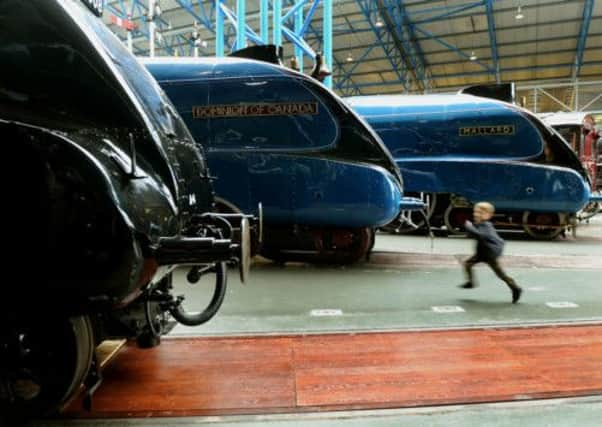Jayne Dowle: If we shut a museum, we close a door on the past which may not open again


It was like stepping into a time machine. There was something so magical about the experience that it fired my imagination and kicked off an interest in history which has endured ever since. Here was a place which gave context to my eight-year-old life, which explained things clearly and brought the past alive through its exhibits and displays.
Around the same time, I went on a school trip to York to visit the newly-opened National Railway Museum. I wasn’t as interested in trains as I was in poking about in an old flour mill in the village where my family have lived for generations, but I was blown away by the size of the place and the looming engines. My abiding memory was the Royal Train, with its twee little sitting room and tables set for dinner
Advertisement
Hide AdAdvertisement
Hide AdI’ve been back since with my son Jack. Like many small boys, he had a fixation with Thomas the Tank Engine and all things train-related. I’ve also been with visitors from the South who were curious to see this fabled place – the National Railway Museum, along with Castle Howard, Whitby Abbey and the Jorvik Viking Centre, is firmly on the map of Yorkshire must-sees.
It shouldn’t be under threat of closure at all, but it finds itself fighting for survival in the Government’s upcoming spending review along with the National Media Museum in Bradford and the Museum of Science and Industry in Manchester.
To me, there is no argument. When an institution has amassed such an amazing collection, it seems absolute sacrilege to shut it down and break it up in the name of saving money. Saving money? What about saving it all for the nation? Or does that kind of idealistic thinking belong to the 1970s, when the cultural landscape was still putting out optimistic new shoots instead of shrivelling into a wasteland?
I certainly understand, from first-hand visitor experience, the value that the National Railway Museum brings to York, and what the National Media Museum does for Bradford. As a nation, we’re supposed to be proud of our heritage. It attracts foreign tourists and brings economic regeneration to towns and cities which have had the post-industrial stuffing knocked out of them. Surely, that should be a priority? Why can’t the Science Museums Group, which runs all three attractions under threat as well as the Science Museum in London, sort out its funding, tackle some of the barriers to charging admission fees, and keep them all going?
Advertisement
Hide AdAdvertisement
Hide AdNo doubt that organisation can come up with a string of reasons why not. I’m inclined to agree with Bradford South MP Gerry Sutcliffe who claims that there is “a nasty metropolitan snobbery about such a prestigious museum being out in the ‘provinces’” after launching a spirited defence of the National Media Museum.
Nothing anyone has told me yet persuades me that there isn’t at least a grain of truth in this argument, and that is why none of us northerners can afford to sit back and allow any closure to happen without kicking up an almighty fuss.
I’m certainly contributing to that fuss. However, amid the clamour, we need to also find some context. We all say we want museums, but we must ask what we want from them. What is a museum actually for? What does it set out to achieve? Who does it seek to attract, and how does it reach out to these people? If it doesn’t consistently capture the attention of the public, a museum can soon struggle like the Royal Armouries in Leeds – even though its 46,288 visitors during the past two months compare favourably to 38,788 during the same period last year.
Having an interesting museum is not a quick-fix to make a town or city interesting. What it does do, however, is to help that location to shape its identity. It gives it something to shout about, and it provides a place for local young people to visit – and to be inspired – as I was all those years ago at Worsbrough Mill and to look back further than what they see in front of them.
Advertisement
Hide AdAdvertisement
Hide AdAlthough the business of museums is the past, they face a constant battle, not only to engage with the demands of current visitors, but to create a sustainable vision for the future. Our museums require special consideration from those who run them, who fund them, and who decide whether they survive or die. That is why this decision over what happens to these three great Northern institutions must not be taken lightly.
Closing a museum is not like closing a factory, it is like closing a door to the past. Once that door is shut, it is almost impossible to prise it open again.